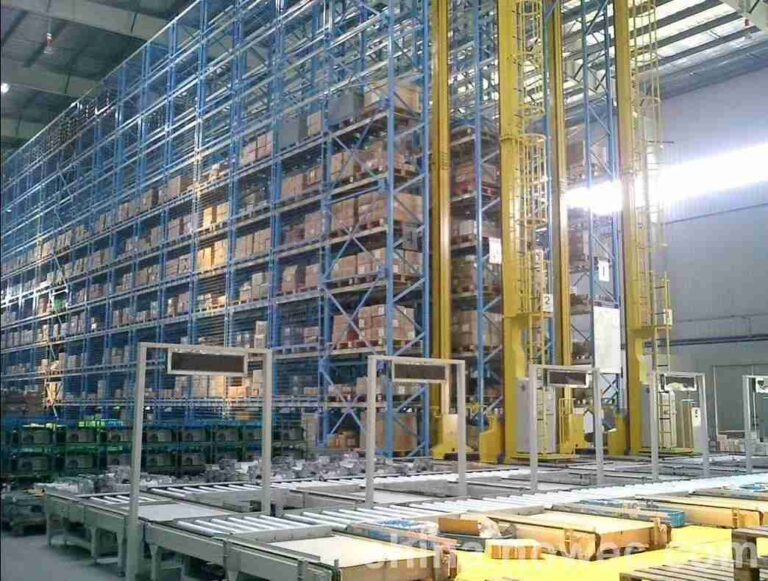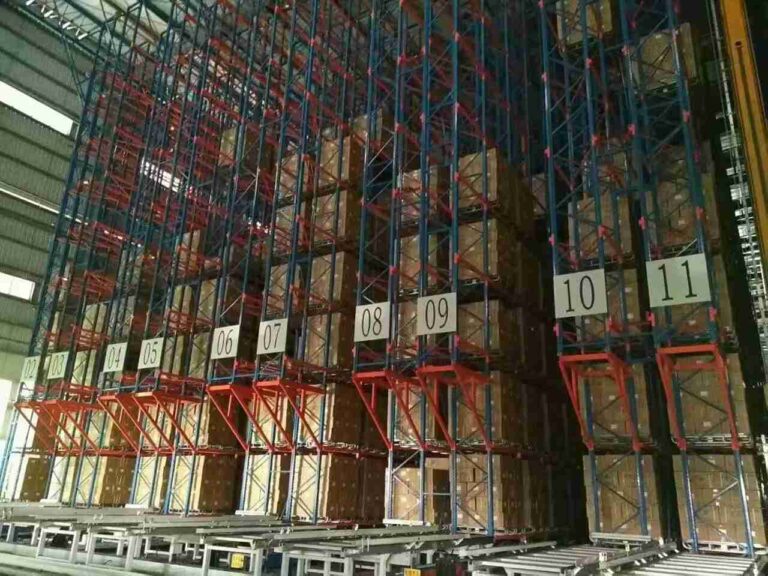📐 "First 50 Enterprise Queries Get Custom 3D Warehouse Design" Plan

Introduction: The Rise of Green Warehouse Automation
The logistics industry stands at a crossroads. With global supply chains under pressure to reduce emissions and improve efficiency, green warehouse automation has emerged as the definitive solution. Unlike traditional warehouses that rely on outdated, energy-draining processes, green warehouse automation integrates cutting-edge technology with eco-conscious practices to create smarter, cleaner, and more cost-effective operations.
Companies adopting green warehouse automation are not just future-proofing their businesses—they’re also meeting stringent environmental regulations, cutting operational costs, and appealing to a new generation of sustainability-driven customers. This article explores how green warehouse automation is transforming logistics, the technologies driving this revolution, and why businesses that delay adoption risk falling behind.

1. What is Green Warehouse Automation?
Green warehouse automation refers to the use of automated systems—powered by AI, robotics, and renewable energy—to optimize warehouse operations while minimizing environmental impact. Unlike conventional warehouses, which consume excessive electricity and produce high carbon emissions, green warehouse automation focuses on:
- Energy-efficient automation (AI-driven systems, solar-powered robotics)
- Sustainable material handling (electric forklifts, hydrogen-powered vehicles)
- Waste reduction (smart inventory management, reusable packaging)
- Renewable energy integration (solar panels, wind turbines)
By implementing green warehouse automation, businesses can reduce energy consumption by up to 50%, lower carbon emissions, and achieve long-term cost savings.
2. The Technologies Powering Green Warehouse Automation
2.1. AI & Machine Learning: The Brains Behind Efficiency
Artificial Intelligence is the backbone of green warehouse automation. AI-driven systems analyze vast amounts of data to:
- Optimize energy usage by shifting high-power tasks to off-peak hours
- Predict equipment failures before they cause downtime
- Streamline inventory management, reducing overstocking and waste
For example, companies like Amazon and DHL use AI-powered robots that minimize unnecessary movement, cutting energy waste by 20% or more.
2.2. Robotics & Automated Storage Systems (AS/RS)
Robotic automation is a cornerstone of green warehouse automation. Key innovations include:
- Automated Storage and Retrieval Systems (AS/RS) – These high-density storage solutions maximize vertical space, reducing the need for sprawling warehouses and lowering HVAC costs.
- Autonomous Mobile Robots (AMRs) – These self-navigating robots transport goods with minimal energy consumption, replacing traditional conveyor belts.
- AI-Powered Sorting Arms – Companies like Ocado use robotic arms to handle fragile items with precision, reducing product damage and waste.
2.3. Renewable Energy Integration
One of the most impactful aspects of green warehouse automation is the shift from fossil fuels to renewable energy. Leading warehouses now use:
- Solar panel roofs (e.g., IKEA’s warehouses run on 100% solar power)
- Wind turbines for supplemental energy
- Energy storage systems (batteries that store excess solar power for nighttime use)
2.4. Electric & Hydrogen-Powered Material Handling Equipment
Traditional diesel forklifts are being phased out in favor of:
- Lithium-ion electric forklifts (zero emissions, lower maintenance)
- Hydrogen fuel cell forklifts (faster refueling, ideal for 24/7 operations)
Major players like Toyota and Hyundai are investing heavily in hydrogen-powered warehouse vehicles, with some facilities reporting 80% lower emissions after switching.
3. The Business Case for Green Warehouse Automation
3.1. Dramatic Cost Savings
While the initial investment in green warehouse automation can be significant, the long-term savings are undeniable:
- Energy bills drop by 30-50% with solar and AI optimization
- Lower maintenance costs due to predictive AI monitoring
- Reduced labor costs through automation
3.2. Compliance with Global Regulations
Governments worldwide are tightening environmental laws, including:
- The EU’s Green Deal (mandating carbon-neutral logistics by 2050)
- U.S. EPA’s SmartWay Program (rewarding low-emission supply chains)
- China’s Carbon Neutrality Pledge (strict emissions caps for warehouses)
Companies that adopt green warehouse automation avoid fines and gain access to tax incentives.
3.3. Competitive Advantage & Brand Loyalty
Today’s consumers and B2B buyers prioritize sustainability. A green automated warehouse enhances:
- Corporate Social Responsibility (CSR) ratings
- Partnership opportunities (retail giants like Walmart favor eco-friendly suppliers)
- Customer retention (studies show 73% of consumers prefer sustainable brands)
4. Overcoming Challenges in Green Warehouse Automation
4.1. High Upfront Costs
The transition to green warehouse automation requires investment in:
- Solar infrastructure
- AI software integration
- Electric vehicle fleets
However, financing options like green business loans and government grants can ease the burden.
4.2. Workforce Adaptation & Training
Employees must learn:
- How to operate robotic systems
- AI-based inventory management
Progressive companies are partnering with technical schools to upskill workers.
4.3. Legacy System Compatibility
Older warehouses may struggle to integrate new automation. Solutions include:
- Phased implementation (gradual upgrades over time)
- Hybrid systems (mixing old and new tech during transition)
5. Real-World Success Stories
5.1. Amazon’s Net-Zero Warehouses
Amazon’s commitment to green warehouse automation includes:
- 100,000 electric delivery vans by 2030
- Solar-powered fulfillment centers
- AI-driven route optimization
5.2. DHL’s GoGreen Program
DHL’s automated warehouses feature:
- Energy-efficient conveyor systems
- Hydrogen-powered forklifts
- Carbon-neutral shipping options
6. The Future of Green Warehouse Automation
Emerging trends include:
- Fully autonomous solar-powered warehouses
- Blockchain for carbon footprint tracking
- AI-powered waste recycling systems
Conclusion: Why Every Warehouse Must Go Green
Green warehouse automation is no longer optional—it’s a strategic imperative. Companies that embrace this shift will enjoy lower costs, regulatory compliance, and stronger customer loyalty, while those that delay risk obsolescence.
The question isn’t if your warehouse should adopt green automation, but how soon you can make the transition.
FAQs on Green Warehouse Automation
1. How quickly can a warehouse transition to green automation?
Most facilities complete the shift in 12-24 months, depending on size and existing infrastructure.
2. Are there financing options for green automation?
Yes—government grants, green loans, and tax credits are widely available.
3. Can small warehouses afford automation?
Absolutely—modular robotics and solar leasing make automation scalable for SMBs.
4. What’s the ROI timeline for green automation?
Most businesses see full ROI within 3-5 years due to energy and labor savings.
5. How does AI reduce warehouse emissions?
AI optimizes energy use, minimizes idle time, and prevents equipment waste, cutting emissions by 20-30%.




